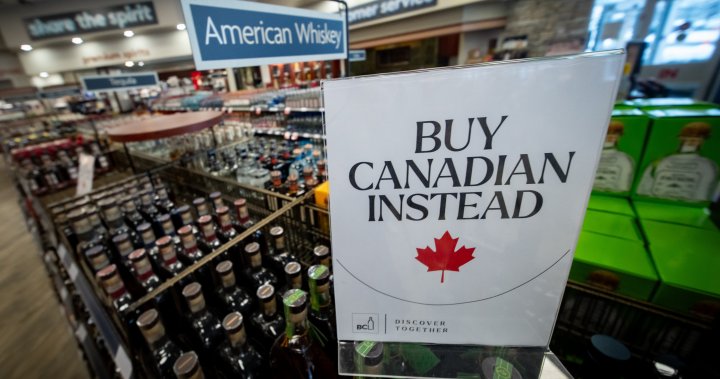Paragraph 1: The Imposition of Tariffs and the "Buy Canadian" Movement
In February 2025, a significant trade dispute erupted between Canada and the United States, culminating in the imposition of sweeping tariffs by U.S. President Donald Trump. These tariffs, targeting a wide range of Canadian goods, were set at 25%, with a lower 10% duty applied to energy products. In response to this protectionist measure, Canadian businesses swiftly rallied behind a "Buy Canadian" initiative, aiming to mitigate the impact of the tariffs and bolster domestic industries. This movement gained momentum as Canadian businesses sought to prioritize domestically sourced products and reduce their reliance on American imports.
Paragraph 2: Loblaw’s Commitment to Canadian Sourcing and Mexican Alternatives
Loblaw Companies Ltd., a prominent Canadian grocery chain, emerged as a key player in the "Buy Canadian" movement. Galen G. Weston, the company’s CEO, publicly declared Loblaw’s commitment to sourcing more food products grown and manufactured within Canada. This pledge underscored the company’s determination to support domestic suppliers and reduce dependence on American imports affected by the tariffs. Recognizing the shared predicament faced by Mexico, which was also subject to the U.S. tariffs, Loblaw strategically explored sourcing alternatives from Mexican suppliers. This move aimed to diversify its supply chain and maintain access to essential goods while minimizing reliance on tariff-burdened American products.
Paragraph 3: Shopify’s Promotion of Local Buying through Shop App Features
Shopify, a leading e-commerce platform, also joined the effort to promote local commerce within Canada, the U.S., and Mexico. Tobi Lütke, Shopify’s CEO, pledged to introduce features in the company’s Shop app designed to encourage consumers to buy locally. These features sought to facilitate the discovery and purchase of products from local businesses, thereby strengthening local economies and fostering a sense of community. This initiative recognized the importance of supporting businesses in all three North American countries affected by the trade dispute, aiming to mitigate the negative impact of the tariffs and foster economic resilience.
Paragraph 4: Escalation of Trade Tensions and Canada’s Retaliatory Tariffs
Canada responded decisively to the U.S. tariffs by implementing its own retaliatory measures. On the same day that the U.S. tariffs came into effect, Canada imposed retaliatory tariffs on approximately $30 billion worth of American products. This calibrated response signaled Canada’s resolve to defend its economic interests and counter the protectionist policies of the U.S. Furthermore, Canada announced its intention to escalate the retaliatory tariffs to $125 billion within 21 days if the U.S. did not reconsider its stance. This firm position reflected Canada’s determination to protect its industries and workers from the adverse effects of the trade dispute.
Paragraph 5: The "Buy Canadian" Movement as a Symbol of National Unity
The "Buy Canadian" movement transcended a purely economic strategy; it became a symbol of national unity and resilience in the face of external pressures. Canadian consumers embraced the initiative, demonstrating their solidarity with domestic businesses and their willingness to support the national economy. This collective effort underscored a shared sense of purpose and a determination to weather the trade storm. The movement reflected a broader sentiment of national pride and a commitment to bolstering Canadian industries in the face of adversity.
Paragraph 6: Long-Term Implications of the Trade Dispute and the "Buy Canadian" Movement
The trade dispute between Canada and the U.S., while disruptive in the short term, had the potential to reshape long-term economic patterns and consumer behavior. The "Buy Canadian" movement, while initially a reaction to the tariffs, could contribute to a sustained shift in consumer preferences towards domestically produced goods and services. This shift could lead to greater diversification of Canadian supply chains and a strengthened domestic market. The trade dispute served as a catalyst for re-evaluating trade relationships and exploring opportunities for greater self-sufficiency. The long-term impact of these changes remained to be seen, but the trade dispute undoubtedly marked a significant turning point in the economic relationship between Canada and the U.S.









